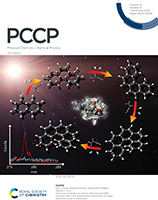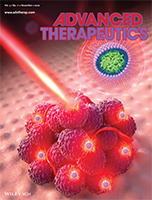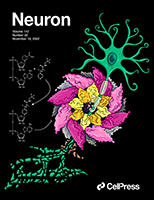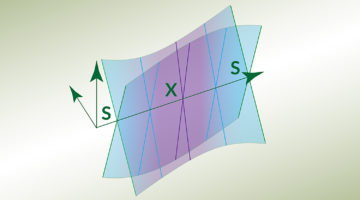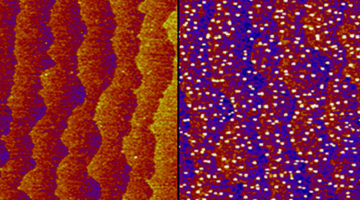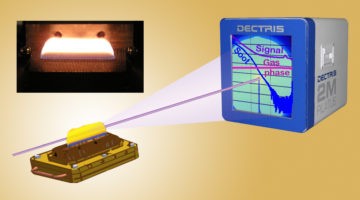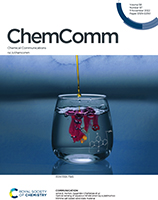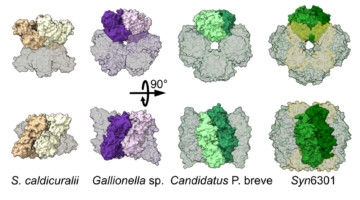Molecular-beam experiments with isomer-selective photoionization via a targeted, vinylacetylene-mediated gas-phase reaction of aromatic helicenyl radicals coupled with electronic structure calculations and astrochemical modeling reveal an elegant synthetic route to racemic helicenes – ortho-fused polycyclic aromatic hydrocarbons (PAHs), in which benzene building blocks form helically-shaped molecules. Read more »
Surface Charge and Nanoparticle Chromophore Coupling to Achieve Fast Exciton Quenching and Efficient Charge Separation in Photoacoustic Imaging (PAI) and Photothermal therapy (PTT)
Organic semiconductor nanoparticles (OSNs) convert absorbed light into heat, and are commonly used in photothermal therapy and photoacoustic imaging. Here, the OAN, Y6, is shown to form strong intermolecular packing, manipulated by surface charge under restrained sizes, yielding new pi-pi stacking and fast exciton quenching. The temperature of the tumor area can rise to more than 70 degrees under NIR irradiation, which can effectively ablate a tumor. Read more »
Uncompetitive, adduct-forming SARM1 inhibitors are neuroprotective in preclinical models of nerve injury and disease
Researchers describe potent small-molecule inhibitors that are neuroprotective in preclinical models of nerve injury and disease. The cover depicts the destruction of an axon by the enzyme SARM1, shown disproportionately large to convey its catastrophic role in driving degeneration once it is activated upon injury. Read more »
Advanced Light Source Upgrade Approved to Start Construction
The ALS has received federal approval to start construction on an upgrade that will boost the brightness of its x-ray beams at least a hundredfold. The DOE approval, known as Critical Decision 3 (CD-3), formally releases funds for purchasing, building, and installing upgrades to the ALS. Read more »
Crossing from One to Two Dimensions in a Single Material
Low-dimensional materials exhibit excellent properties for use in next-generation electronic devices. Now, researchers have discovered an ideal platform for tuning between 1D and 2D physics, expanding the possibilities for device engineering and offering a versatile platform for the exploration of intriguing low-dimensional physics. Read more »
ALS in the News (November 2022)
-
-
-
- How photoelectrodes change in contact with water
- Some labs, projects win big as Department of Energy disburses extra funds
- On the trail of missing genes and cancer clues
- Thinnest ferroelectric material ever paves the way for new energy-efficient devices
- Better understanding of viral protein could lead to more effective COVID drug treatments with fewer side effects
- Ph.D. student Dayne Sasaki receives DOE fellowship to study artificial spin ice materials
- Something’s in the air: It’s nanoplastic pollution
- Former Berkeley Lab scientist Carolyn Bertozzi wins 2022 Nobel Prize in Chemistry
-
-
Watching Nanoparticle Chemistry and Structure Evolve
Using a multimodal approach, researchers learned how chemical properties correlate with structural changes during nanoparticle growth. The work will enable a greater understanding of the mechanisms affecting the durability of nanoparticles used to catalyze a broad range of chemical reactions, including clean-energy reactions. Read more »![]()
![]()
Distinguishing Nanoparticles from Gas-Phase Species in Reacting Flows
Researchers developed a strategy for distinguishing between gas-phase species and newly formed nanoparticles in mixed gas- and particle-phase reacting flows. The approach uses small-angle x-ray scattering to study particle formation as it occurs by explicitly accounting for temperature-dependent scattering from gases. Read more »![]()
Optical sensing of aqueous nitrate anion by a platinum(II) triimine salt based solid state material
Researchers present a new Pt(II) salt that enables the selective and quantitative measurement of aqueous nitrate anions without the need for pH adjustment. The method relies on the color change of the Pt(II) complex from yellow to red and an intense luminescence response, simplifying the detection process for on-site applications and expanding its applicability to broader matrices. Read more »
Protein Assemblies Show Surprising Variability
Protein-structure studies performed in part at the ALS helped researchers discover that the protein assemblies in a key carbon-cycling enzyme can rearrange with surprising ease. The findings raise the prospect of genetically tuning the protein in agricultural plant species to produce more productive and resource-efficient crops. Read more »![]()
![]()
- « Previous Page
- 1
- …
- 18
- 19
- 20
- 21
- 22
- …
- 83
- Next Page »
